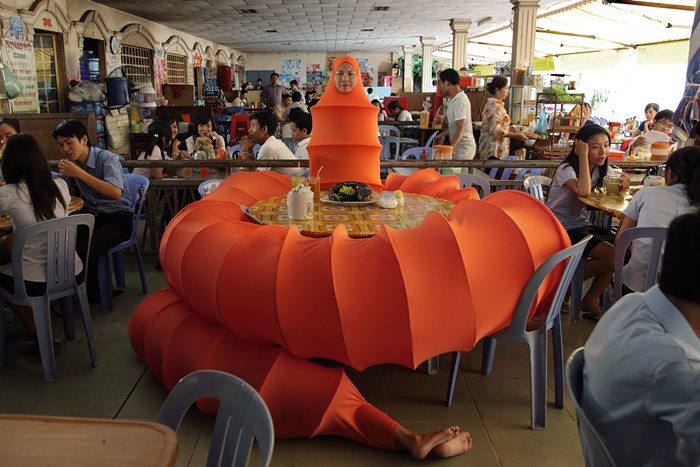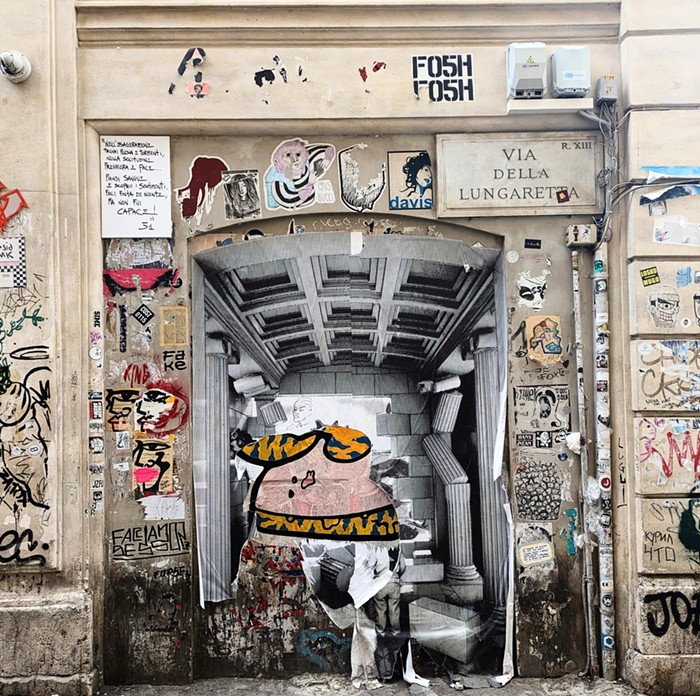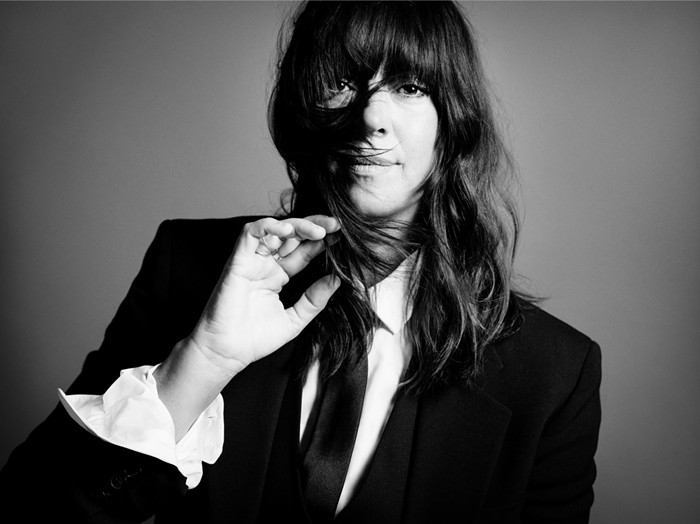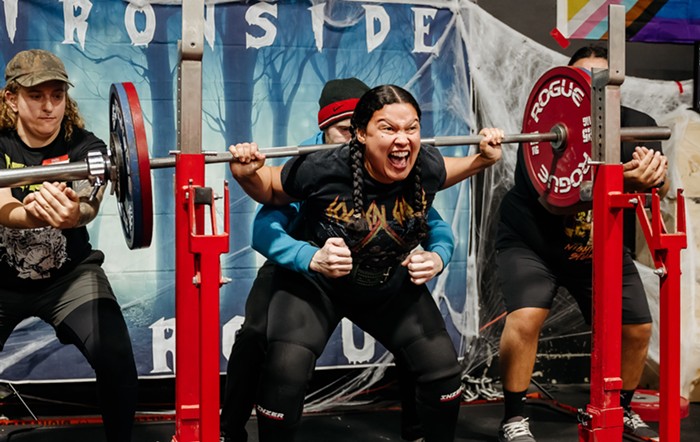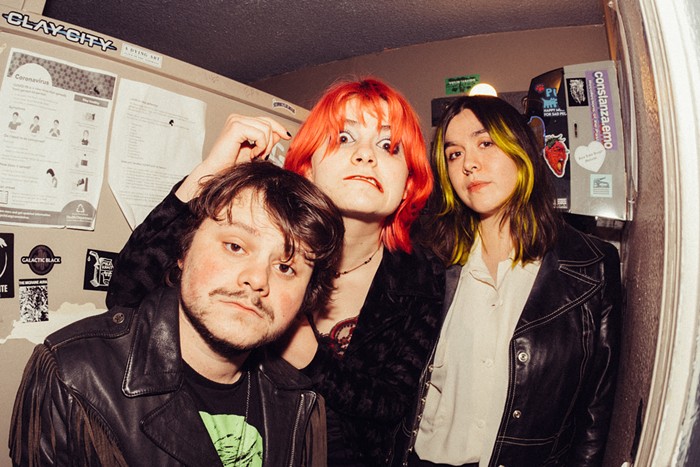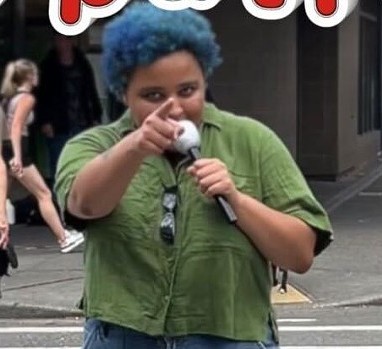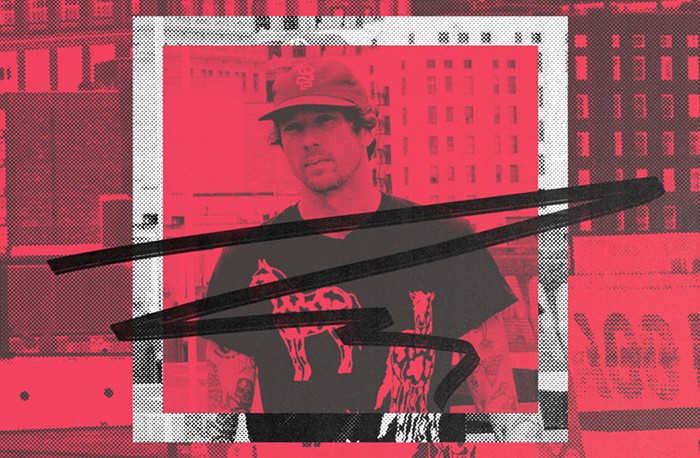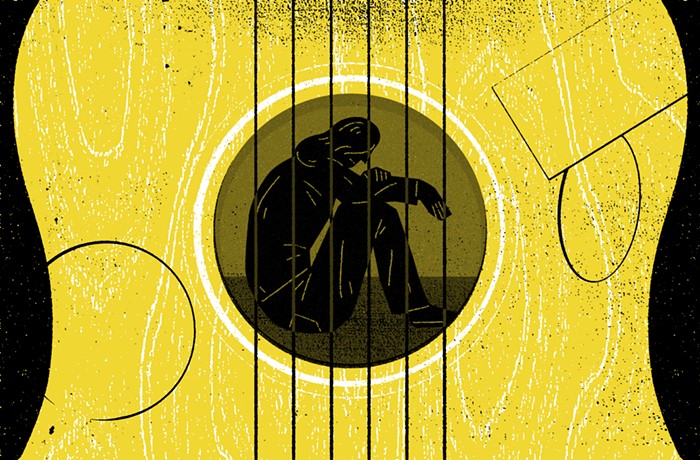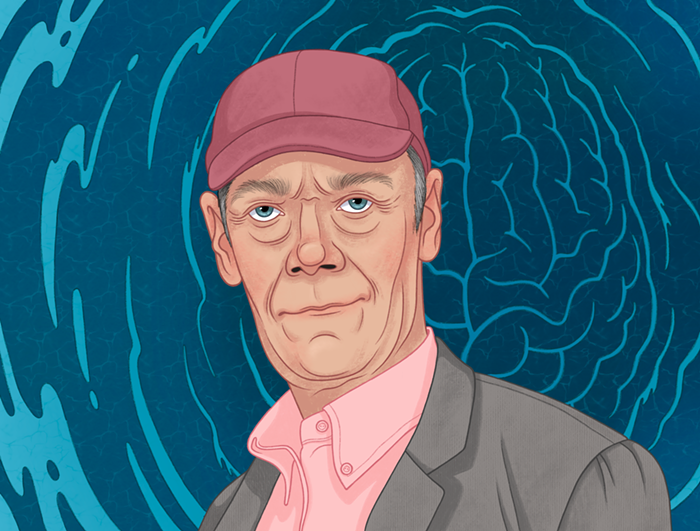Just like last year, when the announcement came over the loudspeaker at 6 p.m. on Sunday that the Seattle Art Fair was closed, people applauded. But this time, the applause was a little more sparse, a little more nervous. Fair organizer Max Fishko said people clap only in Seattle. The desire for success is so strong.
It's strong in me. It's why I did more listening than looking at the fair last weekend, even though I like looking at art about 11 times more than talking to random strangers. I'm trying to crack the code of this thing. Who were these 18,000 people who showed up during the fair's four days? Why did they stand in an opening-night line that stretched two football fields long? Can Seattle Art Fair, which just finished its second year, survive in the long term? Can it be good for art and culture in Seattle in general?
I patrolled the CenturyLink Field Event Center on Thursday, Friday, Saturday, and Sunday, pulling people over on any minor pretext, especially for breaches of the normal social order that offered hope that the art fair might cross over and catch on. Kathy Creahan and David Funke's breach was that they showed up wearing Mariners gear and looked like they were in the neighborhood primarily to go to the baseball game. How'd they get in here? With a $20-a-day entrance fee, they had to be here on purpose.
I asked them if they were buyers or if this was more like a museum trip where you show up, see the art, and go home holding only your memories, thoughts, and questions rather than objects. A museum trip, she said.
"We'd be more in the market for something $5,000 or under—nothing like at this level," he said, waving his hand in the direction of the 80-plus booths of art in every medium by galleries from across the region, the nation, and the world that had answered Microsoft cofounder Paul Allen's call to come to town and make something big happen.
When I heard Funke's comment, I didn't know how to take it. So I turned into a salesperson.
"There is a lot here for $5,000 or less, you know," I said, doing a wave-around of my own.
"Oh, yeah, yeah," he and Creahan both said, nodding and giving me the feeling that they understood yes, of course, good point, and maybe they'd get to that, but probably not.
But Funke and Creahan, who in one way represent exactly why the fair might fail, also give me hope that there really is a crackable code and that there's a fighting chance we'll all be able to go to the 10th annual Seattle Art Fair in the summer of 2025.
Here's what an art fair needs to survive: sales. Here's why Seattle Art Fair deserves a fighting chance: Because in only two years, it has expressed perfectly the tension, as Eastside native/Sleater-Kinney riot grrrl/Portlandia star Carrie Brownstein put it, between the ambition of this region and its ambivalence toward its own ambition.
So many ambivalent social dynamics are on view at Seattle Art Fair: between sports and art, between billionaires and regular people who can pay $5,000 for art and regular people who can't, between artists of color and artists prized by the old white establishment, between Asia and Europe, between East Coast and West Coast, between the international galleries that choose to come to Seattle for four days and the thinning ranks of local galleries that manage to hang on here all year, between people who display $500 original art over their garage-sale couch and people who paid their interior designer to hang a framed poster from Ikea over their $10,000 sofa.
At the top of my memory at the end of a blur of four days are people like Cliff Burrows and Pat Boonyarittipong.
Burrows is group president of the US and Americas at Starbucks and a trustee of Seattle Art Museum. He's the subject of a March 14 Q&A on news.starbucks.com headlined "Cliff Burrows on His Love of Art and Passion for Starbucks." He name-checks artists Tracey Emin, Gavin Turk, and Kehinde Wiley, the artist whose paintings of Black subjects inserted into Old Master European scenes were displayed this year at Seattle Art Museum. On opening night at the fair, I saw Burrows eyeing an expensive painting by Wiley at the booth of Roberts & Tilton Gallery, which is at the fair this year for the first time from Los Angeles, taking a chance on this young enterprise. So I went over and introduced myself, and I asked Burrows whether he was considering buying the painting he was admiring. He demurred.
"I'm not a collector," he said, which, yes, means he was gracious enough not to "no comment" me. He seemed very nice. But it was maddening to watch someone in Burrows's position—a man with a good job, who clearly cares about art, stand in front of a piece he loves and say, "I'm not a collector." Without people like Burrows buying art, Seattle Art Fair will not succeed. For non-collector "collectors," there's a well-worn path: buy and give it to an institution.
Then there's Boonyarittipong. He's a young Stanford grad who double majored in economics and computer science. On Sunday, wearing flip-flops and shorts, he approached Margaret Kelly at Pace, one of the biggest galleries at the fair (and in the world), to ask her more about some photographs he'd just seen in the booth and decided he liked very much. They cost between $45,000 and $60,000. "Cheaper than a Range Rover or a Tesla," he said, thinking of a friend, who recently spent that much on a car.
Boonyarittipong is one of those elusive tech workers the art world is betting on to develop an art habit. He moved to Seattle to work for Microsoft just a few months ago and isn't ready to spend too much yet. But maybe someday. He disappeared into the fair looking for something $1,000 or less that really grabbed him. Not finding anything, he went home and looked on Artsy for something under $2,000. He didn't find anything, but he's still out there, searching.
I was reminded of a major dealer out of New York at the fair who sold only one small thing (to a New York collector) and told me, "If it takes a year for buyers to show up, we'll be here. If it takes five years, nobody will be here."
The art fair is an insanely convoluted way to help local artists sustain themselves. It would be more logical for, say, a billionaire to endow local arts organizations on an ongoing basis. But this year's fair provoked an act of guerrilla art that served as a reminder that it is perilous to pin your hopes on the steadfastness even of the man who founded the fair.
The guerrilla was Britta Johnson, a stop-motion animation artist in Seattle. She stood outside the fair handing out flyers for a fictional bake sale. The goal, according to the flyers, was to sell enough cookies and cupcakes to raise $2.5 million for the Paul G. Allen Family Foundation—the amount the foundation gave to local arts groups until one day in 2014 when the money got yanked, the year before Allen founded the art fair. "When a member of our community falls on hard times," the flyers read, "we come together to help them get back on their feet. Please help us help the struggling Foundation return to its previous philanthropic grandeur by purchasing some of our delicious treats!"
Another way to solve the problem—that artists need money to survive, and they're being priced out of living in Seattle—would be local people buying art from galleries that exist here year round. But art galleries barely survive in Seattle. Several long-timers—including Platform, PUNCH, and Roq La Rue—have closed this year alone.
Meanwhile, a single night at the fair can yield more sales than in six months at a local gallery. On opening night, Seattle's Greg Kucera sold a dozen works by Northwest artists. Another Seattle gallerist, James Harris, sold a big Mary Ann Peters painting to a Washington collector who could have bought it at any other time but chose the fair. Jeffry Mitchell, Joe Rudko, Barbara Earl Thomas, Rodrigo Valenzuela, Lead Pencil Studio, Justin Duffus, Jeremy Mangan, Susan Dory, and David Hytone are all Seattle artists who sold work during the fair. A sale once a year doesn't cover the rent, but the hope is that a major event like this builds interest and knowledge in collectors and artists alike.
I've been to fairs around the world, and this is a good one. Max Fishko and Jeff Wainhause of Art Market Productions, the producers of the fair, are organized, committed, and decent. Allen's company Vulcan has provided support for the fair and an artistic director who programmed talks, mini-exhibitions within the fair (including by Seattle's Jeffry Mitchell), and free music and dance performances out in the city.
A few blocks away at Union Station, where the old Seattle railroad hub's arched concourse is so beautiful that you would swear it was made of actual gold and ivory, I saw a dance performance where only the dancers could hear the music, through little earpieces. What we heard instead, as we sat on the magnificent oak benches, was the beautiful sound of a dancer's foot as her flesh swept the old tiles, bare skin caressing an industrial past like a fetish object.
Inside the fair itself, though a few dealers pandered—please take your fish sculptures dripped with multicolored paint and your Starbucks logo paintings elsewhere, thanks—most brought serious work and said they're seeking that balance between creating an impressive show of works that belong at museums and providing pieces that Seattle's noncommittal community will actually buy. Major new-to-the-fair galleries like Petzel from New York, Richard Levy from Chicago, and Roberts & Tilton from Los Angeles said sales were slow. Big galleries that returned this year, including David Zwirner, Pace, and Paul Kasmin, all talked of hoping to come next year. Pace was the most visibly pleased, though Zwirner director Robert Goff was happy to meet a new Seattle collector who bought the coveted Yayoi Kusama painting he'd kept off the market especially for this fair.
Paul Allen was rumored to have bought something big—and he definitely, according to Woodside/Braseth Gallery, purchased a $45,000 metal ball by Seattle artist Brandon Zebold. He didn't buy work that seemed tailor-placed for him: two life-size re-creations of an early IBM computer mainframe made entirely in graphite by Adam McEwen ($425,000 each). The gallery that brought it, Petzel, sold only one small piece by a different artist, and to a New York collector.
Kaikai Kiki, the gallery founded by Japanese super-artist Takashi Murakami and based in Tokyo, also had disappointingly few sales at the fair. But over the weekend in Seattle, Murakami and Kaikai Kiki realized a different goal in spectacular fashion. Along with the popular art magazine Juxtapoz, Murakami—who appeared multiple times over the weekend, acting as the fair's most delightful unofficial frontman—launched a full-scale group exhibition of 23 artists, following up on his hit show Superflat from 16 years ago. The show is intended to smuggle lowbrow Juxtapoz artists over the border into fine art, so Superflat stars like Chiho Aoshima, Mr., and Murakami himself are included to lend their legitimacy to artists like James Jean and Erin M. Riley. The results were mixed, but there were standouts, including ceramics by Kazunori Hamana, a large new painting and sculpture by Trenton Doyle Hancock, and a hilarious sculpture of a cartoony male nude (his eyes blink mechanically) surrounded by easels for anyone to sketch by David Shrigley.
The show is gone already. Kaikai Kiki is in talks to tour Juxtapoz x Superflat to museums, but in Seattle, Murakami and Juxtapoz had no sponsor to staff the exhibition for longer than a weekend. They underwrote the show themselves, even flying the artists to Seattle for the opening. (Vulcan allowed Juxtapoz x Superflat to use its space Pivot Art + Culture in South Lake Union for four days.)
It especially mattered that Japanese avant-garde floral arranger Yuji Ueno had been flown in. His performance in a parking lot across the street from Pivot (where the results still stand) was a beautiful disturbance in the smooth surface of South Lake Union on a sunny afternoon. He bloodied his face and hands rigging up an "arrangement" on top of a car composed of shopping carts. He was nearly crushed by an old floral-print couch. And then he lassoed a hanging pot of red geraniums, like a cowboy, swinging it in a circle above his head until it went flying—terrifyingly—into a parked car and smashed to smithereens.
As a critic, I want Seattle Art Fair to be here in five years because every day I saw artists soaking up inspiration and telling me about what they saw as they ducked, hungrily, into booth after booth. I saw them at the talks in the fair's theater, leaning forward to listen not only to the celebrities Carrie Brownstein, Kyle MacLachlan (Twin Peaks, coming out with a new season next year), and Kim Gordon (Sonic Youth), but also to British artist Cally Spooner, beamed in from the middle of the night in Greece, and to First Nations artist Brian Jungen, talking to LA curator Anne Ellegood about his work and her upcoming exhibition with Jimmie Durham, a Native American artist who for 25 years has been legendarily reluctant to show in the United States.
At one point, I was wolfing lunch on a bench when I overheard teenagers at the entrance bucking to get in. One was actually jumping up and down. The next day, I saw Seattle artist Roldy Aguero Ablao, who toured youth from Des Moines and Burien through the fair as part of a summer art class at the nearby Wing Luke Museum of the Asian Pacific American Experience. They saw things they'd never see otherwise—Roxy Paine's queasiness-inducing re-creation of a hotel room in a surveillance state, large paintings by David Hockney and Emma Amos, the giant interactive animated installation Sketch Aquarium by teamLab, collages and paintings by Betye Saar and Robert Motherwell. "They just wanted to go home and make art," Ablao told me. We won't know for a decade, maybe, whether someone or something great ends up tracing its inspiration back to something that happened at Seattle Art Fair.
Those same students will visit the satellite exhibitions that have sprung up around the fair this year. Out of Sight at King Street Station has more than 200 works of art by more than 120 artists from this region, and the show is strong, cohesive, political, and powerful to experience. (A full review is online at thestranger.com.) It will be up the rest of the month. The same goes for What You See Is What You Sweat, another group show, at the Center on Contemporary Art, dealing with questions of cultural appropriation, love, and care.
At one point at the fair itself, I found myself skipping, in the sunshine, out to the 50-yard line on the field at CenturyLink, home of the Seahawks and the Sounders (owned and co-owned by Allen). That was part of a tour created by the artist Glenn Kaino and led by famed NYC tour guide Speed Levitch.
Levitch played a Martian visiting from the future. He narrated Seattle's coming history in English with a Martian accent. (A Martian accent, it turns out, is halting and glitchy.) We stood on the field, sun on our faces, as he described in his nasal glitch the events that are our destiny. He told us something we all suspect is actually true.
It's about to be the end of the world as we know it in Seattle, he said. How it ends is unclear.

